Photonics: A more sensitive device
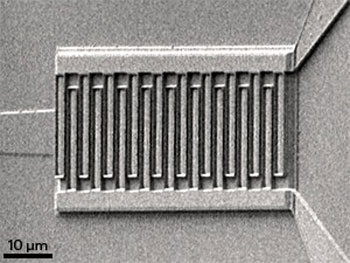 Electron resonances could greatly enhance the response of the photodetectors critical to the operation of optical chips.
Electron resonances could greatly enhance the response of the photodetectors critical to the operation of optical chips.
Mar 16th, 2011
Read more
 Electron resonances could greatly enhance the response of the photodetectors critical to the operation of optical chips.
Electron resonances could greatly enhance the response of the photodetectors critical to the operation of optical chips.
Mar 16th, 2011
Read moreRegistration is now open for the eighth international Frontiers of Characterization and Metrology for Nanoelectronics conference, cosponsored by the National Institute of Standards and Technology (NIST), which will take place May 23-26, 2011, at the MINATEC campus in Grenoble, France.
Mar 16th, 2011
Read more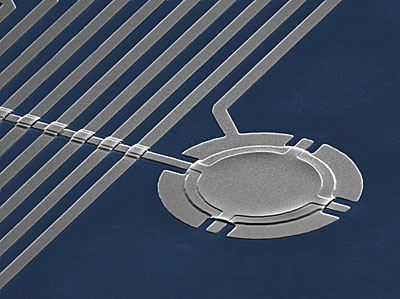 Physicists at the National Institute of Standards and Technology (NIST) have demonstrated an electromechanical circuit in which microwaves communicate with a vibrating mechanical component 1,000 times more vigorously than ever achieved before in similar experiments. The microscopic apparatus is a new tool for processing information and potentially could control the motion of a relatively large object at the smallest possible, or quantum, scale.
Physicists at the National Institute of Standards and Technology (NIST) have demonstrated an electromechanical circuit in which microwaves communicate with a vibrating mechanical component 1,000 times more vigorously than ever achieved before in similar experiments. The microscopic apparatus is a new tool for processing information and potentially could control the motion of a relatively large object at the smallest possible, or quantum, scale.
Mar 16th, 2011
Read moreSoon, drug delivery that precisely targets cancerous cells without exposing the healthy surrounding tissue to the medication's toxic effects will no longer be an oncologist's dream but a medical reality, thanks to the work of Professor Sylvain Martel, Director of the Nanorobotics Laboratory at Polytechnique Montreal.
Mar 16th, 2011
Read more Einem internationalen Forscherteam ist die Herstellung von hoch geordneten, poroesen Kristallen, die mehrdimensionale Strukturen mit extrem grossen Oberflaechen aufweisen, gelungen.
Einem internationalen Forscherteam ist die Herstellung von hoch geordneten, poroesen Kristallen, die mehrdimensionale Strukturen mit extrem grossen Oberflaechen aufweisen, gelungen.
Mar 15th, 2011
Read more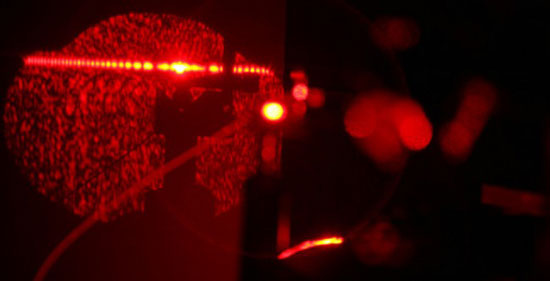 A new laser technique has demonstrated it can measure the interactions between proteins tangled in a cell's membrane and a variety of other biological molecules. These extremely difficult measurements can aid the process of drug discovery.
A new laser technique has demonstrated it can measure the interactions between proteins tangled in a cell's membrane and a variety of other biological molecules. These extremely difficult measurements can aid the process of drug discovery.
Mar 15th, 2011
Read more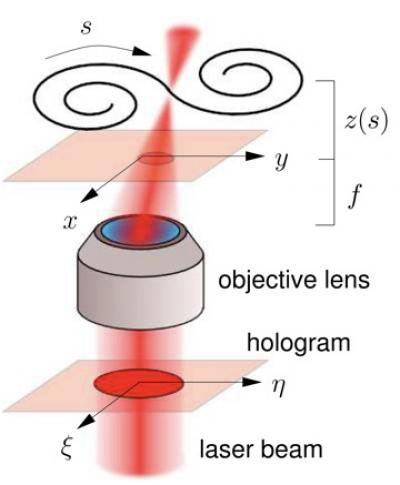 3-D optical trapping technique holds potential for applications in energy, medicine.
3-D optical trapping technique holds potential for applications in energy, medicine.
Mar 15th, 2011
Read more A safe, simple, and cheap method of creating perfectly etched micron and smaller size wells in a variety of substrates has been developed by researchers in Penn State's Department of Chemical Engineering. Similar patterned surfaces are currently made using complex and expensive photolithography methods and etch processes under clean room conditions and used in the fabrication of many optical, electrical, and mechanical devices.
A safe, simple, and cheap method of creating perfectly etched micron and smaller size wells in a variety of substrates has been developed by researchers in Penn State's Department of Chemical Engineering. Similar patterned surfaces are currently made using complex and expensive photolithography methods and etch processes under clean room conditions and used in the fabrication of many optical, electrical, and mechanical devices.
Mar 15th, 2011
Read more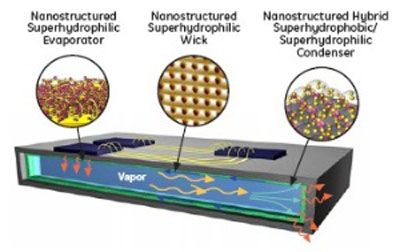 Scientists in GE's Global Research Center have demonstrated an advanced thermal material system that could pave the way to faster computing and higher performing electronic systems. Leveraging technologies developed under GE's Nanotechnology Advanced Technology Program, they have fabricated a prototype substrate that can cool electronic devices such as a laptop computer twice as well as copper.
Scientists in GE's Global Research Center have demonstrated an advanced thermal material system that could pave the way to faster computing and higher performing electronic systems. Leveraging technologies developed under GE's Nanotechnology Advanced Technology Program, they have fabricated a prototype substrate that can cool electronic devices such as a laptop computer twice as well as copper.
Mar 15th, 2011
Read moreExpanding eligibility to college students from across the state, while offering additional categories and enhanced cash prizes, the College of Nanoscale Science and Engineering (CNSE) of the University at Albany, in partnership with UAlbany's School of Business, the Lally School of Management and Technology at Rensselaer, and Union Graduate College School of Management today announced plans for the second annual New York State Business Plan Competition, to be held Thursday, April 28 at the UAlbany NanoCollege.
Mar 15th, 2011
Read more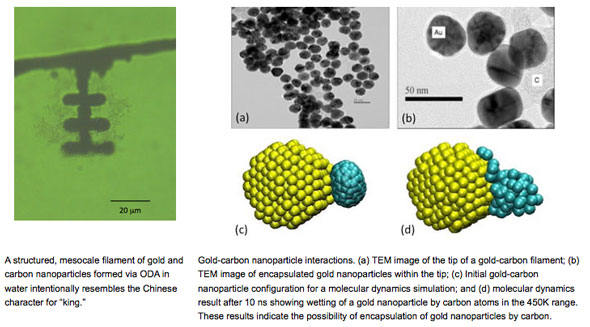 Scientists in the Center for Nanoscale Materials and Argonne's Biosciences Division have demonstrated a remarkably simple, elegant, and cost-effective way of assembling nanoparticles into larger structures of any desired shape and form at will via a process called "optically directed assembly".
Scientists in the Center for Nanoscale Materials and Argonne's Biosciences Division have demonstrated a remarkably simple, elegant, and cost-effective way of assembling nanoparticles into larger structures of any desired shape and form at will via a process called "optically directed assembly".
Mar 15th, 2011
Read moreEngineering researchers at the University of Michigan have found a way to improve the performance of ferroelectric materials, which have the potential to make memory devices with more storage capacity than magnetic hard drives and faster write speed and longer lifetimes than flash memory.
Mar 15th, 2011
Read moreIt's a cloak that surpasses all others: a microscopic carbon cloak made of graphene that could change the way bacteria and other cells are imaged.
Mar 15th, 2011
Read moreGerman companies global technology leaders in core processes for the manufacture of integrated circuits.
Mar 15th, 2011
Read moreUniversity of Utah researchers built "spintronic" transistors and used them to align the magnetic "spins" of electrons for a record period of time in silicon chips at room temperature. The study is a step toward computers, phones and other spintronic devices that are faster and use less energy than their electronic counterparts.
Mar 15th, 2011
Read moreA team of electrical engineers and chemists at Lehigh University have experimentally verified the "rainbow" trapping effect, demonstrating that plasmonic structures can slow down light waves over a broad range of wavelengths.
Mar 14th, 2011
Read more